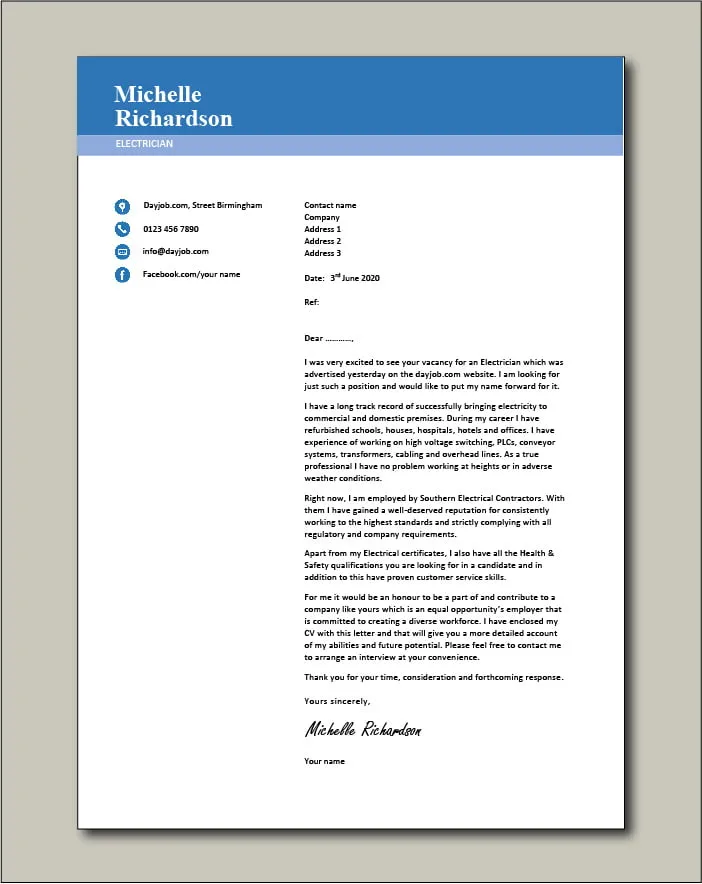Why You Need a Standout Electrician Cover Letter
In the competitive field of electrical work, a well-crafted cover letter is your essential tool to grab the attention of potential employers. A generic resume often isn’t enough; a compelling cover letter allows you to personalize your application and showcase your unique skills, experience, and enthusiasm for the role. It provides an opportunity to elaborate on your qualifications and demonstrate why you are the ideal candidate for the job. Think of it as your first impression - make it count and increase your chances of getting an interview and ultimately, the job.
Understanding the Purpose of an Electrician Cover Letter
The primary goal of an electrician cover letter is to introduce yourself, highlight your relevant skills and experiences, and express your interest in the specific position. It serves as a persuasive introduction, encouraging the hiring manager to delve deeper into your resume. It’s not just a summary of your qualifications; it’s an opportunity to demonstrate your personality, professionalism, and genuine interest in the company. The cover letter also gives you a chance to address any potential gaps in your experience or explain career transitions. A well-written cover letter differentiates you from other applicants and positions you as a top candidate.
Key Components to Include in Your Cover Letter
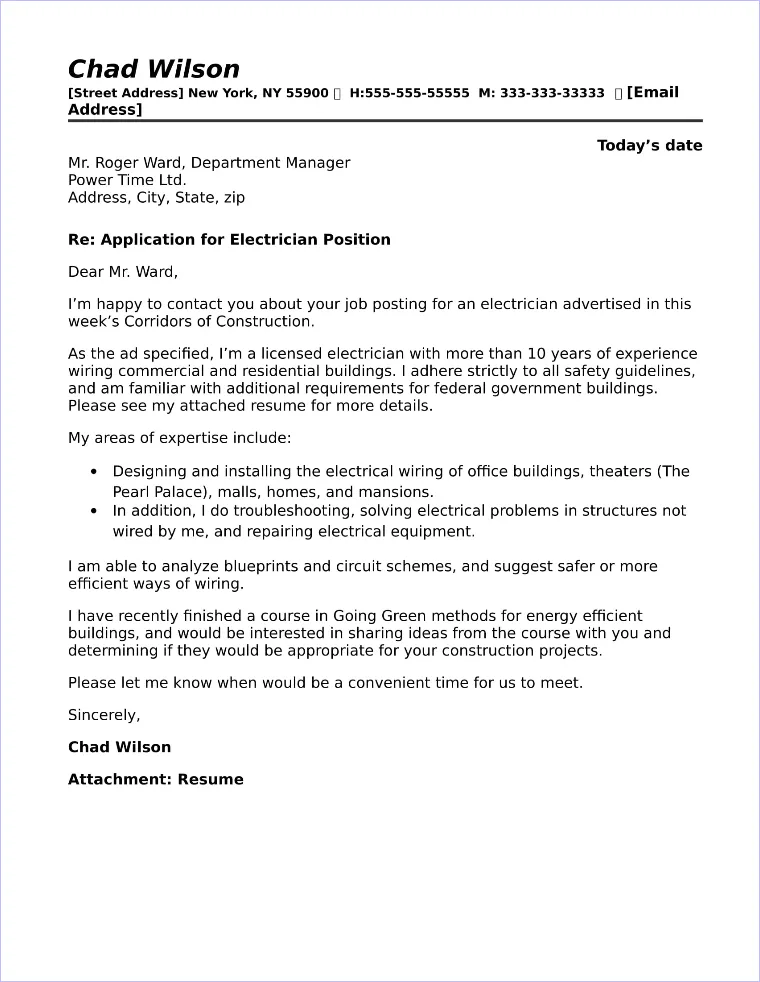
Your Contact Information and Date
Start with your full name, address, phone number, and email address at the top of the cover letter. Following this, include the date. This section ensures that the employer can easily reach you and verifies when the letter was written. Make sure your contact information is current and professional, ensuring the hiring manager can easily get in touch. Check for any typos or errors to maintain a professional image.
The Hiring Manager’s Details
Address your cover letter to the hiring manager by name if possible. Researching the name and title of the hiring manager or the person responsible for reviewing applications adds a personal touch and shows you have taken the initiative. If you cannot find a specific name, use a professional greeting such as “Dear Hiring Manager”. Avoid generic greetings to make a better first impression. Personalizing the greeting can set you apart from the many applicants who may not take the time to find out this information.
A Compelling Opening
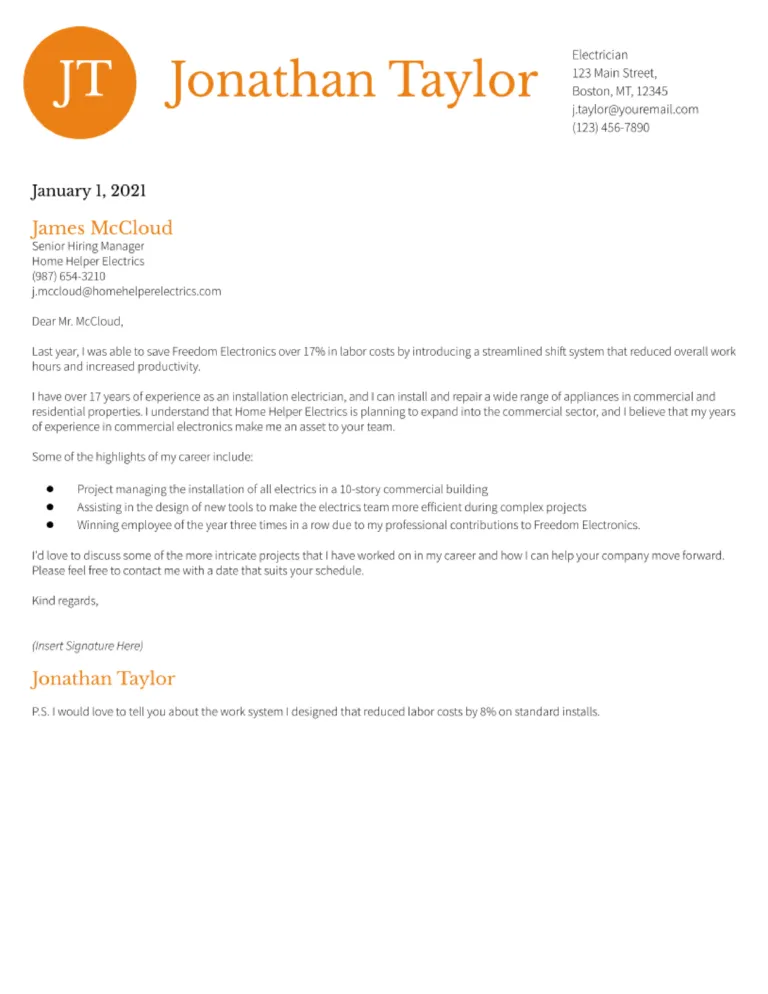
Your opening paragraph should immediately grab the reader’s attention. State the position you are applying for and where you found the job posting. Briefly express your enthusiasm for the role and the company. The opening should convey your interest and highlight your key qualifications to create an excellent first impression. This section is where you make your initial pitch, so it must be engaging and relevant to ensure that the reader continues to read the rest of your cover letter. Start strong and make them want to learn more about you.
Highlighting Your Skills and Experience
The body of your cover letter should focus on your relevant skills and experience. Select the most pertinent skills and experiences that align with the job description. Don’t just list your responsibilities; describe what you accomplished and how your skills benefited your previous employers. Use specific examples to showcase your capabilities and quantify your achievements whenever possible. Tailor this section to match the job posting. Refer to the required and desired skills and demonstrate how your background fits.
Quantifying Your Achievements
Whenever possible, use numbers and data to quantify your achievements. For example, instead of saying “Improved efficiency”, you might write “Improved project efficiency by 15% through optimized wiring methods.” Quantifiable achievements prove the value you brought to previous employers and demonstrate your ability to achieve results. Use numbers to give the hiring manager concrete evidence of your qualifications. Metrics will help the employer understand how you can contribute to the company.
Showcasing Relevant Certifications and Licenses
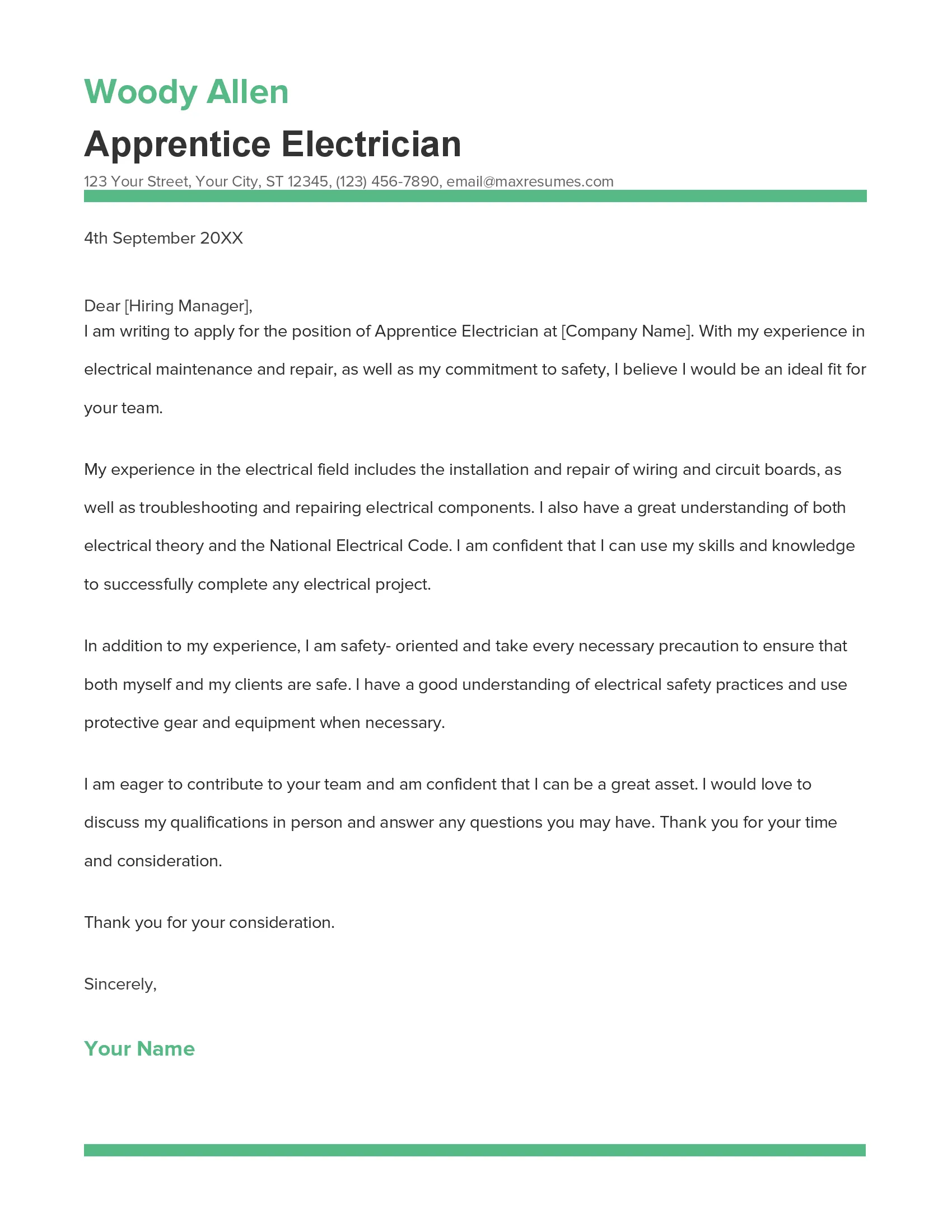
List your relevant certifications and licenses, such as a Journeyman or Master Electrician license, and any specialized training you have. Include the issuing authority and the date of certification. Making this easy to find and prominently displayed ensures that the employer knows you meet the minimum requirements for the job. This information supports your claims of expertise and validates your professional standing in the field. This section is especially important as many jobs require specific certifications to comply with local regulations.
Addressing Specific Job Requirements
Carefully review the job description and address each of the requirements mentioned. Show how your skills and experience align with the stated needs of the position. Provide specific examples of how you have handled similar tasks or challenges in previous roles. Demonstrating this focus shows the hiring manager that you have read the job posting carefully and have the skills the employer wants. Matching your qualifications with job requirements demonstrates your suitability for the role.
Expressing Enthusiasm and Interest
Show genuine enthusiasm for the opportunity and the company. Explain why you are interested in the specific role and the company’s mission or values. Demonstrate your understanding of the company’s work and how you can contribute to their success. A cover letter that demonstrates genuine enthusiasm makes you stand out from the many applicants who see the job only as a paycheck. Employers want to hire individuals who are genuinely excited about the role and the company culture.
A Strong Closing and Call to Action
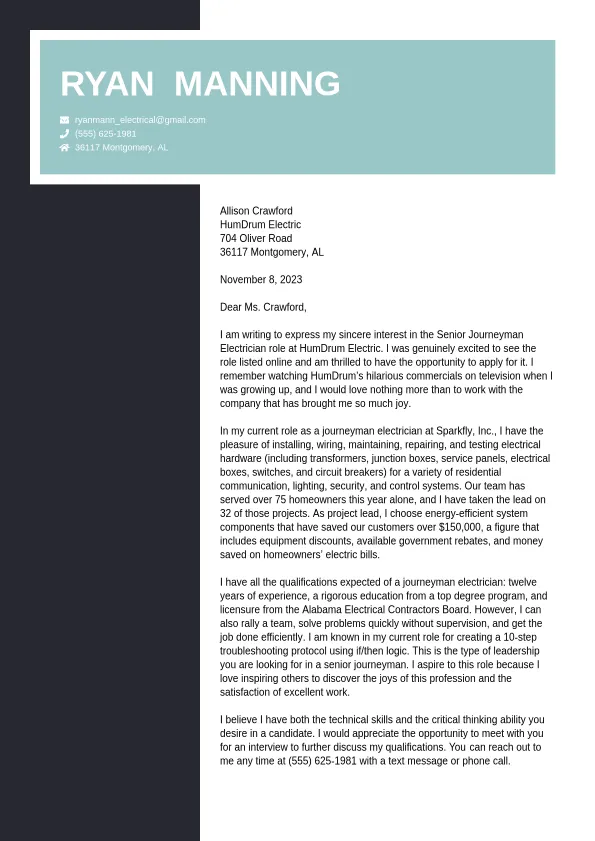
In your closing paragraph, summarize your qualifications and reiterate your interest in the position. Include a call to action, such as expressing your availability for an interview and providing your contact information. Thank the hiring manager for their time and consideration. The final paragraph should reinforce your qualifications, show your readiness to move forward, and leave the hiring manager with a positive impression. A clear and strong conclusion ensures the hiring manager knows you are serious about the job.
Electrician Cover Letter Examples
Example 1 Entry-Level Electrician Cover Letter
This type of cover letter is suitable for individuals with limited or no professional experience. It should highlight any relevant coursework, apprenticeships, or volunteer experiences. Focus on transferable skills, such as problem-solving, attention to detail, and willingness to learn. Show your eagerness to start your electrical career and your commitment to professional development and safety. You can also include details about any certifications obtained or technical skills learned. Be sure to mention any relevant hobbies that align with your electrical aspirations.
Example 2 Experienced Electrician Cover Letter
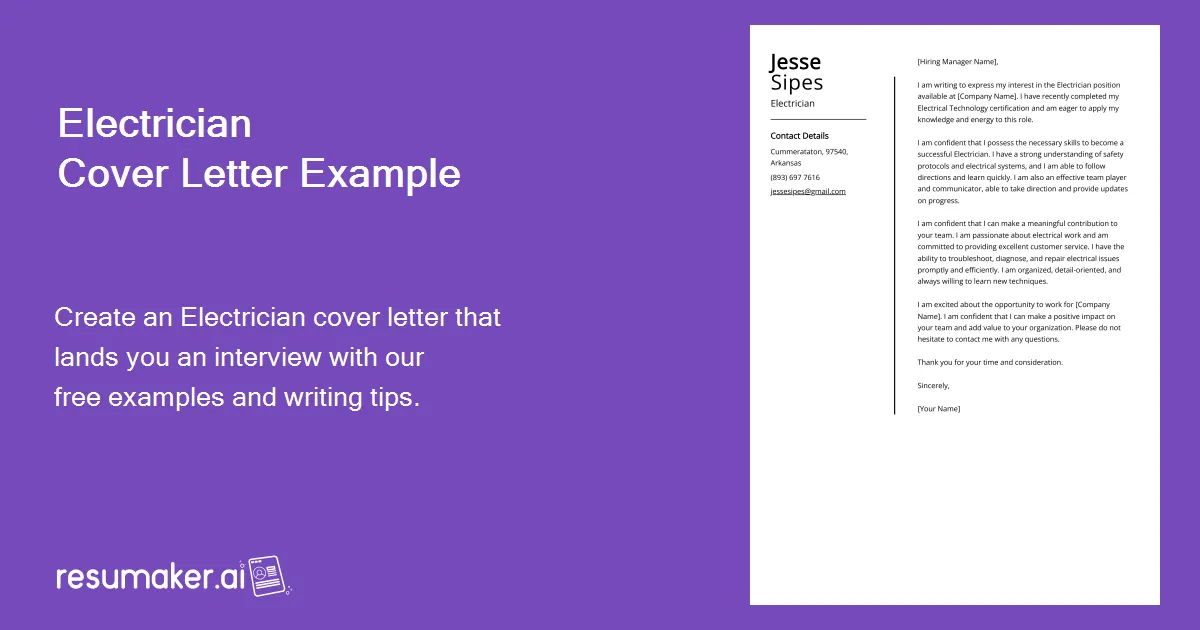
Experienced electricians should focus on their practical accomplishments, such as project management, troubleshooting complex systems, and ensuring code compliance. List specific achievements with measurable results. Use examples of how you improved efficiency, reduced costs, or resolved critical electrical problems. Highlight your specialization, such as commercial or residential electrical work. Mention any supervisory responsibilities or any training of junior electricians. Detail projects and achievements related to the jobs you are seeking.
Example 3 Electrician Cover Letter for a Specific Role
When applying for a specific role, tailor your cover letter to address the job requirements explicitly. If the job involves a certain type of electrical work, be sure to highlight your experience in that area. If the job requires a specific skill, like working with a particular type of equipment or in a particular setting, mention it. Show the hiring manager that you have the specific experience they are looking for. Read the job description thoroughly and identify what is unique about the position. Provide examples that show you have what it takes to excel in the role.
Tips for Writing a Winning Electrician Cover Letter
Tailoring Your Cover Letter to Each Job
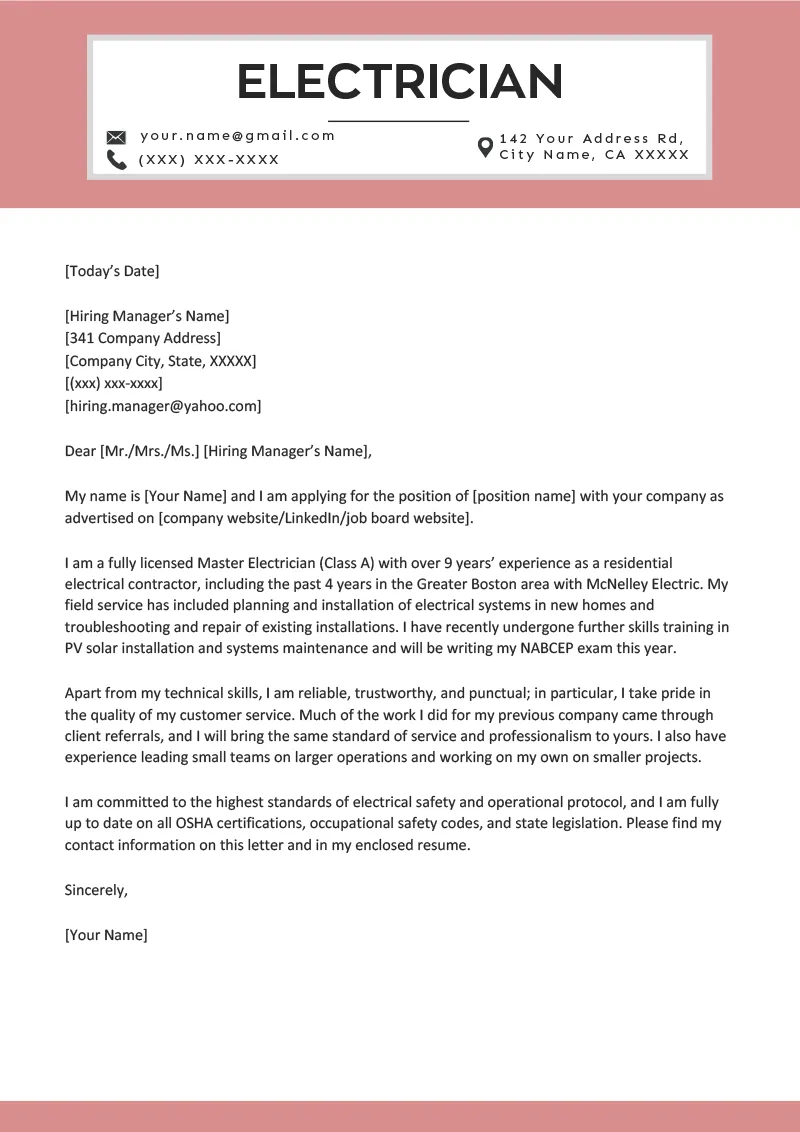
Never send a generic cover letter. Always customize your cover letter to match the specific requirements of each job you apply for. This means carefully reading the job description and highlighting the skills and experiences that are most relevant. Personalize your letter by mentioning the company and why you’re interested in working for them. Customized cover letters demonstrate genuine interest and help you stand out from other applicants. Showing that you’ve researched the company and the job adds a personal touch.
Proofreading and Editing for Accuracy
Carefully proofread your cover letter for any grammatical errors, spelling mistakes, or typos. Errors can create a negative impression and suggest a lack of attention to detail. Always use a spell checker, but don’t rely on it entirely. Have a friend or family member review your cover letter as a second pair of eyes can often catch mistakes that you might miss. Proofread meticulously, as typos and grammatical errors can make your application look unprofessional.
Using Action Verbs to Showcase Your Abilities
Use action verbs to describe your skills and accomplishments. Words like “managed,” “installed,” “troubleshooted,” and “maintained” paint a vivid picture of your abilities. Action verbs make your cover letter more engaging and demonstrate your capabilities effectively. They help you to present your experiences dynamically. Replace passive phrases with strong verbs that showcase your impact in past roles. This style makes your cover letter more compelling.
Formatting Your Cover Letter for Readability
Use a clear, easy-to-read font, such as Arial or Times New Roman. Keep the formatting consistent throughout the document. Break up large blocks of text with short paragraphs and bullet points to make your cover letter easier to read. Ensure the formatting is professional and easy on the eyes. A well-formatted cover letter is more likely to be read in its entirety. Maintain a clean and organized layout for your cover letter.
